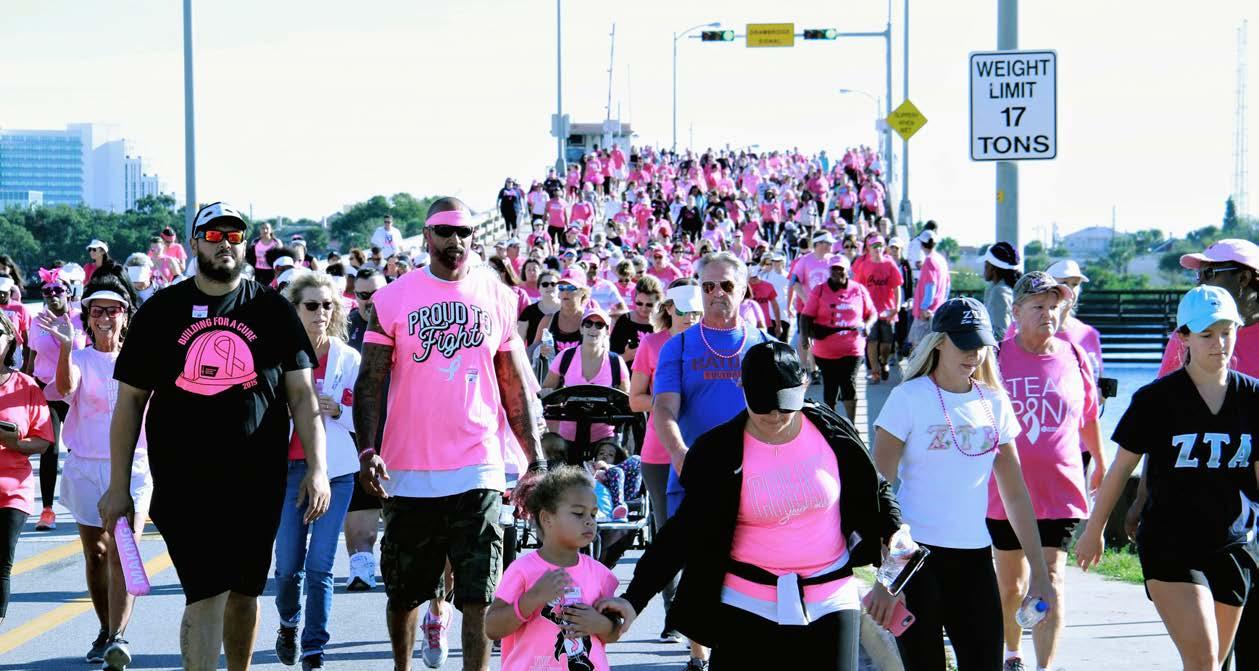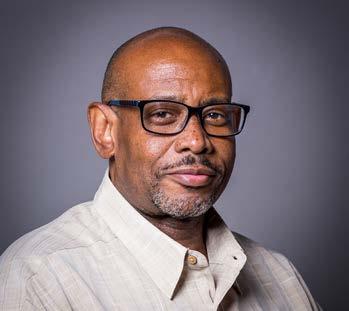
5 minute read
Duane Fernandez Award-Winning Photojournalist

The Walk For Cancer event in Daytona Beach, Florida, with participants crossing the Main Street Bridge on Oct. 27, 2018.
Photo by Duane Fernandez
Duane Fernandez Award-Winning Photojournalist
Advertisement
As an award-winning photojournalist for the Daytona Times, Duane Fernandez has covered several of the most impactful stories that have grabbed headlines around the country in recent years. Among them are the Trayvon Martin murder trial in Sanford, Florida in 2013; the hate-fueled shooting at Charleston, South Carolina’s Emmanuel AME Church in 2015; and Muhammad Ali’s funeral in Louisville, Kentucky in 2016.

Duane Fernandez
The Daytona State graduate with an AS in Photography regularly covers the Daytona 500, and in 2016, photographed President Barack Obama at a rally in Kissimmee, an event that still resonates him. “I got to photograph the President of the United States,” said Duane, with a smile and shake of his head. “Who would have ever thought a kid coming out of the housing projects of Hartford, Connecticut would grow up to do that?”
Duane received his first camera, a Minolta that came with four flash bulbs, as a Christmas gift from his father when he was seven years old. It was a gift choice that was inspired by what he had seen on the popular legal drama, “Perry Mason.”
Though he always enjoyed photography, it took many years for that interest to become something more than a hobby. Growing up, Duane did what he described as physical work in body shops, or at Colt Firearms, which was headquartered in Hartford.
He was married, later divorced, and became disabled. It was at that point, his love of photography re-emerged.
“After I became disabled, it felt like a new chapter in my life. What am I going to do? I started walking to lose weight and realized even though you live in a neighborhood, you don’t really know your neighborhood when you’re just driving through it. But when you walk, you start seeing things you’ve never noticed. So I bought a camera, my first digital camera.”
Duane enrolled in Tunxis Community College and a professor gave him a piece of advice that changed his life. “He said one of the best schools in the country for photography is in Daytona Beach.” Daytona Beach, ironically, was already on Duane’s radar. He had first visited the city for Bike Week in 2002 and had grown up a NASCAR fan, so he made the call to Daytona State College, and after talking with an admissions counselor, made the decision to re-locate, something he had already been considering.
Duane said the program at Daytona State, where he started in 2009, allowed him to explore many different types of photography, including urban photography. He would often stop to take pictures of the things he saw as he was out riding his bike, many of them simple things that told a story of the community. They were stories that needed to be told, about people who may not have a way to do so themselves, or places that might otherwise be forgotten.

President Obama attends a rally in Kissimmee, Florida on Nov. 16, 2016.
Photo by Duane Fernandez
When combined with his interests in civil rights and history, Duane’s talent, not just as a photographer, but as a photojournalist, is on full display. Part of that has nothing to do with his skills per se, but the humanity in which he approaches the subject. Some of that he learned from being disabled himself, and some of that from the very people he has covered.
Duane also took the words of his DSC professors to heart, especially when they emphasized how important it was to get published. So, when Duane was around town taking pictures, he would figure out who to send them to for the best chance at publication.
One example of that was a rally in Sanford following the shooting death of Trayvon Martin in 2012. Eric Breitenbach, senior professor in the DSC School of Photography, had suggested it would be a good event to attend. “When I got there, I was like ‘Whoa, there must be 20,000 people here!’”
Duane sent about a dozen photos to the Daytona Times, which liked them so much, they were used in a collage. They issued him a press pass, and as the story developed further, Duane continued to cover it. From jury selection all the way through the trial, he was there, and was later among the journalists recognized by the Thurgood Marshall Organization for their exceptional coverage.
There have certainly been plenty of lighter moments and less serious events for Duane too, who laughed when recounting how he asked Charles Cherry, publisher of the Daytona Times, for a press pass to the Daytona 500 several years ago.
Duane has a soft spot for cars, and with both his father and uncle racing them, he spent a lot of his childhood weekends at the track. Duane ended up getting the pass, and in so doing became the first African-American photographer to cover the Daytona 500. He is a regular at the Daytona Speedway now, and commended NASCAR for its diversity initiatives, and is proud to be a part of that.
Beyond his work as a photographer, Duane runs his own website, Deep Focus News, which covers a wide variety of topics pertaining to Daytona Beach and the surrounding area, from food and sports to general news and social issues. While it does feature his photography, it also allows him to write about the community he loves.
Duane’s work extends beyond news and sports too, with his Hardnotts University, a program teaching at-risk youth to “shoot with cameras, not guns.”
He also produces documentaries, one of which details the Arthur G. Dozier Reform School for Boys, infamous for its reputation for abuse, beatings, rape and murder of students by staff. It operated for over 100 years in Marianna, Florida before it was closed by state authorities in 2011, and Duane’s documentary was among those shown at the 2018 Orlando Film Festival.
He has other projects nearing completion or in the works too, and his passion for history, civil rights, and the local community can be felt in all of them.
Duane noted he always has his camera and his press pass, so wherever he goes, he’s ready. He represents a good balance of what a student can learn in the classroom at DSC, and what they can learn outside of it if they’re willing to put in a little extra time. “Sometimes you think you’re not learning, but then you get out in the real world, and it all kicks in.”
www.DaytonaState.edu/Magazine








